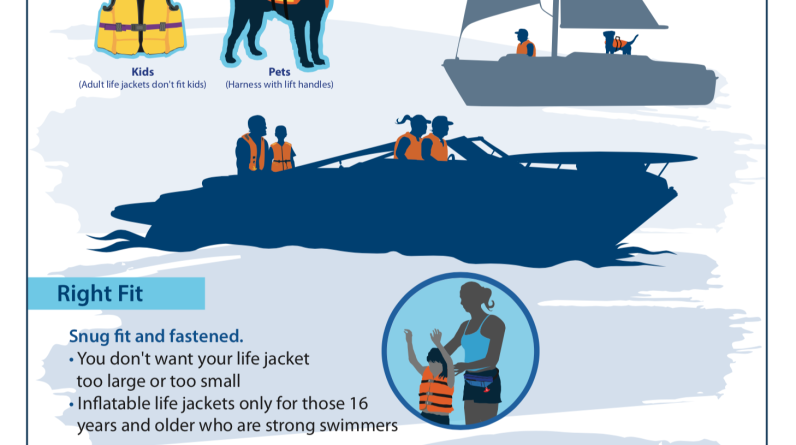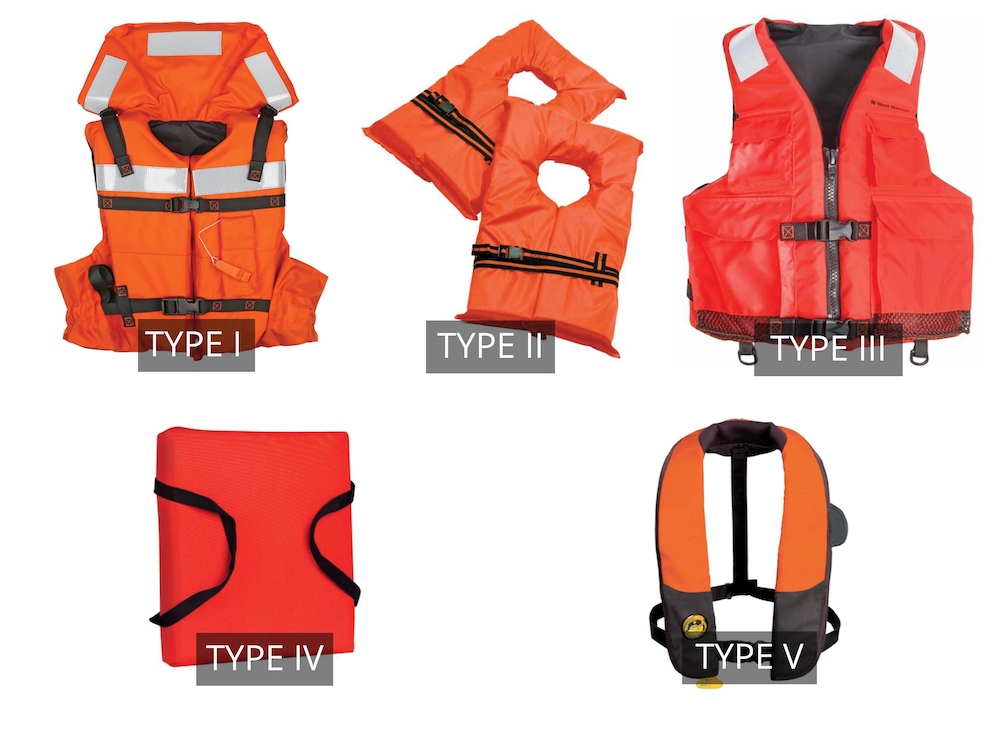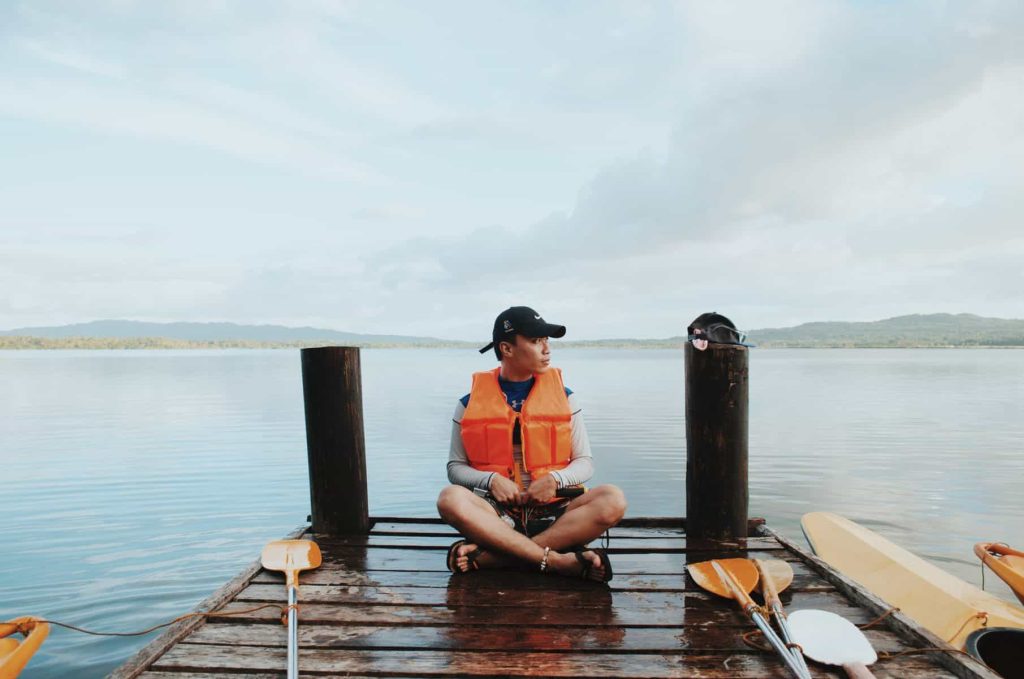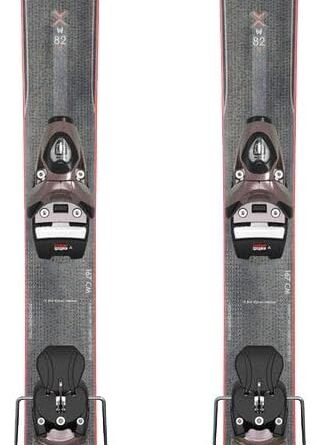
If you’re heading out for a day of fun on the water, ensuring your safety should always be a top priority. But with so many options available, it can be overwhelming to figure out which life jacket is best suited for your chosen water sport. Whether you’ll be wakeboarding, kayaking, or paddleboarding, understanding the different types of life jackets and their features is crucial in making the right choice. In this article, we’ll explore the factors to consider when selecting a life jacket and provide valuable tips to help you make an informed decision, allowing you to enjoy your water sports adventures with peace of mind.
Factors to consider when choosing a life jacket
When it comes to choosing a life jacket, there are several important factors that you should consider. These factors will ensure that you select a life jacket that not only keeps you safe but also provides you with the comfort and functionality you need. The key factors to consider when choosing a life jacket are buoyancy, fit, type, visibility, and safety features. By carefully considering these factors, you can make an informed decision and select the right life jacket for your needs.
Buoyancy
Buoyancy is perhaps the most crucial factor to consider when choosing a life jacket. The buoyancy of a life jacket determines its ability to keep you afloat in the water. It is important to select a life jacket with sufficient buoyancy to support your body weight. Different activities may require different levels of buoyancy, so it is essential to assess your needs and choose accordingly.
Fit
A proper fit is vital to ensure that your life jacket functions effectively. A life jacket that is too loose may slip off, while one that is too tight may restrict your movement and become uncomfortable over time. It is important to choose a life jacket that fits snugly around your chest and torso. Adjustable straps and buckles are often provided to help you achieve a secure and comfortable fit.
Type
There are different types of life jackets designed for various purposes. The different types are classified according to their intended use and the level of buoyancy they provide. The most common types of life jackets include Type I, Type II, Type III, Type IV, and Type V. Each type is suited for different water activities and environments, so it is essential to choose the appropriate type for your needs.
Visibility
Visibility is another important factor to consider when choosing a life jacket. In emergency situations, it is crucial for rescue personnel to be able to locate you quickly. Therefore, selecting a life jacket that is highly visible is essential. Look for life jackets that come in bright colors such as orange or yellow, as they are easier to spot in the water. Reflective elements can also help increase visibility, especially in low light conditions.
Safety features
Different life jackets come with various safety features designed to enhance your safety and improve your chances of survival in the water. Some important safety features to look out for include crotch straps, which prevent the life jacket from riding up and ensure a secure fit, floating collars that provide added support and keep your head above water, whistle and other signaling devices to attract attention, grab handles for easy rescue, and attachment points for accessories such as lights or a knife.
Different types of life jackets
Life jackets are classified into different types based on their intended use and level of buoyancy. Understanding the differences between these types is essential in selecting the right life jacket for your needs. The five main types of life jackets are Type I, Type II, Type III, Type IV, and Type V.
Type I
Type I life jackets, also known as offshore life jackets, are designed for rough or remote water conditions where rescue may be delayed. They provide the highest level of buoyancy and are designed to turn an unconscious person face up in the water. Type I life jackets are bulkier and less comfortable than other types, but they offer maximum safety in extreme conditions.
Type II
Type II life jackets, also known as nearshore buoyant vests, are designed for calm or inland water where rescue is likely to be prompt. They provide a lower level of buoyancy than Type I life jackets, but they are more comfortable and less bulky. Type II life jackets are suitable for activities such as boating and fishing in relatively calm waters.
Type III
Type III life jackets, also known as flotation aids, are designed for activities where there is a high chance of a quick rescue. They are the most comfortable and versatile type of life jackets, allowing for greater freedom of movement. Type III life jackets are suitable for activities such as kayaking, canoeing, paddleboarding, and water skiing.
Type IV
Type IV life jackets, also known as throwable devices, are not worn but rather thrown to someone in need of rescue. They are typically ring buoys or cushions that can provide temporary flotation until help arrives. Type IV life jackets are a required safety item on most boats and are often used in conjunction with wearable life jackets.
Type V
Type V life jackets, also known as special use devices, are designed for specific activities or special situations. They often include inflatable designs or special features tailored to the particular water activity. Type V life jackets are intended for use in the specific conditions or water sports for which they are designed, and they must be worn to be effective.

This image is property of cdn.shopify.com.
Choosing the right buoyancy
Buoyancy is a critical factor to consider when selecting a life jacket. The buoyancy of a life jacket determines its ability to keep you afloat in the water. Understanding buoyancy ratings and choosing the suitable buoyancy for different water sports is essential to ensure your safety.
Understanding buoyancy ratings
Buoyancy ratings are expressed in pounds and indicate how much weight a life jacket can support in the water. In general, the higher the buoyancy rating, the more flotation the life jacket provides. It is important to choose a life jacket with a buoyancy rating appropriate for your body weight and the activities you will be participating in. You should also consider any additional weight you may be carrying, such as clothing or gear.
Suitable buoyancy for different water sports
Different water sports and activities require different levels of buoyancy. For example, activities such as kayaking or canoeing typically require less buoyancy as these sports are generally conducted in calmer waters where rescue is likely to be prompt. On the other hand, activities such as offshore sailing or whitewater rafting may require higher levels of buoyancy due to the rough or remote water conditions.
Factors affecting buoyancy
Several factors can affect the buoyancy of a life jacket. The design and construction of the life jacket, such as the type and amount of foam used, can impact its buoyancy. The fit of the life jacket also plays a role, as a properly fitted life jacket will be more effective in supporting your body weight. Additionally, any added weight from clothing, gear, or accessories should be taken into account when considering buoyancy requirements.
Ensuring proper fit
The fit of a life jacket is crucial to ensure that it functions effectively in keeping you safe in the water. A life jacket that doesn’t fit properly may not provide adequate support, may restrict your movement, or may even come off during an emergency. It is essential to pay attention to the fit of a life jacket before making a purchase.
Importance of a snug fit
A snug fit is important because it ensures that the life jacket stays securely in place during water activities. A loose life jacket may ride up and hinder your movement, while a tight life jacket may restrict your breathing or become uncomfortable over time. A snug fit is especially crucial for children, as they may have a harder time staying afloat if their life jacket doesn’t fit properly.
Sizing guidelines
Life jackets are typically available in a range of sizes to accommodate different body types and weights. It is important to refer to the manufacturer’s sizing guidelines and choose a life jacket that fits within your weight and chest circumference range. It is also recommended to try on the life jacket before purchasing to ensure that it fits properly and comfortably.
Adjustment options
Many life jackets come with adjustable straps and buckles to allow for a more customized fit. These adjustment options can help you achieve a snug fit and ensure that the life jacket stays securely in place. It is important to take the time to adjust the straps properly to ensure a comfortable and secure fit.
Testing the fit
Once you have selected a life jacket and adjusted it to your satisfaction, it is important to test the fit in a controlled environment. This can be done by entering shallow water and gently floating to assess how the life jacket supports your body weight. If the life jacket rides up, feels uncomfortable, or restricts your movement, it may not be the right fit for you. It is essential to find a life jacket that provides a comfortable and secure fit for your specific body type and water activities.

This image is property of www.discoverboating.com.
Determining the appropriate type of life jacket
Choosing the appropriate type of life jacket is vital to ensure that it meets your specific needs and provides you with the necessary level of safety. There are five main types of life jackets – Type I, Type II, Type III, Type IV, and Type V – each designed for different water activities and situations.
Type I: Offshore Life Jacket
Type I life jackets, also known as offshore life jackets, are designed for use in situations where rescue may be delayed, such as in remote or rough water conditions. These life jackets provide the highest level of buoyancy and are designed to turn an unconscious person face up in the water. They are bulkier and less comfortable than other types, but they offer maximum safety in extreme conditions.
Type II: Nearshore Buoyant Vest
Type II life jackets, also known as nearshore buoyant vests, are designed for use in calm or inland water where rescue is likely to be prompt. They provide a lower level of buoyancy than Type I life jackets, but they are more comfortable and less bulky. Type II life jackets are suitable for activities such as boating and fishing in relatively calm waters.
Type III: Flotation Aid
Type III life jackets, also known as flotation aids, are designed for activities where there is a high chance of a quick rescue. They are the most comfortable and versatile type of life jackets, allowing for greater freedom of movement. Type III life jackets are suitable for activities such as kayaking, canoeing, paddleboarding, and water skiing.
Type IV: Throwable Device
Type IV life jackets, also known as throwable devices, are not worn but rather thrown to someone in need of rescue. They are typically ring buoys or cushions that can provide temporary flotation until help arrives. Type IV life jackets are a required safety item on most boats and are often used in conjunction with wearable life jackets.
Type V: Special Use Device
Type V life jackets, also known as special use devices, are designed for specific activities or special situations. They often include inflatable designs or special features tailored to the particular water activity. Type V life jackets are intended for use in the specific conditions or water sports for which they are designed, and they must be worn to be effective. Some examples of Type V life jackets include those designed for paddleboarding, wakeboarding, and jet skiing.
Considering visibility
Visibility is an important factor to consider when choosing a life jacket. In emergency situations, it is crucial for rescue personnel to be able to locate you quickly. By selecting a life jacket with high visibility features, you can increase your chances of being seen in the water.
Bright colors
Choosing a life jacket in a bright color such as orange or yellow can significantly improve your visibility in the water. These colors stand out against the surrounding environment and make it easier for rescue personnel to spot you. Avoid selecting life jackets in dark or camouflaged colors, as they can blend in with the water and make it harder for others to see you.
Reflective elements
Many life jackets come with reflective elements such as strips or patches that can enhance your visibility, especially in low light conditions. Reflective materials can reflect light and make you more visible from a distance. This is especially beneficial if you find yourself in a situation where rescue may be delayed or during nighttime water activities.
Additional signaling options
Some life jackets may come equipped with additional signaling options, such as built-in whistle pockets or attachment points for distress lights or other signaling devices. These features allow you to attract attention and signal for help if needed. Consider choosing a life jacket with these additional signaling options to increase your chances of being located in an emergency.

This image is property of i.ytimg.com.
Important safety features
When choosing a life jacket, it is essential to consider the safety features it offers. Different life jackets come with various safety features designed to enhance your safety and improve your chances of survival in the water. Here are some important safety features to look out for when choosing a life jacket:
Crotch straps
Crotch straps or leg straps are an important safety feature, especially in rough water conditions. These straps prevent the life jacket from riding up and ensure that it stays securely in place, even if you are faced with strong currents or large waves. Crotch straps are particularly useful for activities such as whitewater rafting or offshore sailing, where the risk of falling into the water is higher.
Floating collars
Floating collars are designed to provide added support and keep your head above water, even if you are unconscious. These collars are often found on Type I life jackets and are especially beneficial in situations where rescue may be delayed. Floating collars can help prevent drowning by keeping your airway clear and reducing the risk of water entering your mouth or nose.
Whistle and other signaling devices
Having a whistle or other signaling device attached to your life jacket can be a lifesaver in an emergency. These devices allow you to attract attention and signal for help if needed. Whistles are particularly effective in situations where visibility may be limited, such as in fog or during nighttime water activities.
Grab handles
Grab handles are a valuable safety feature that allows others to assist you in the water. They provide a secure grip for rescuers to hold onto and pull you to safety. Grab handles are typically found on the back or shoulders of the life jacket and are especially useful in situations where you may need to be rescued from a boat or from the water.
Attachment points for accessories
Some life jackets come with attachment points or loops that allow you to attach additional safety accessories such as lights, knives, or personal locator beacons. These attachment points can enhance your safety by providing additional signaling options or tools that can assist you in an emergency. Consider choosing a life jacket with attachment points if you anticipate needing these additional safety features.
Specific life jackets for different water sports
Different water sports often require specific life jackets that are designed with the unique needs and demands of the activity in mind. Each water sport may have different safety requirements, so it is important to choose a life jacket that is suited for the specific sport you will be participating in. Here are some examples of specific life jackets for different water sports:
Boating
When boating, it is important to wear a life jacket that meets the specific requirements of the activity and the location. These life jackets are often Type II or Type III and provide the necessary buoyancy and safety features for boating. They are designed to be comfortable for extended periods of wear, allowing for freedom of movement while providing the necessary level of safety.
Kayaking
Kayaking life jackets are typically Type III life jackets that provide a balance between comfort and safety. They are designed to allow for a full range of motion and are often equipped with features such as multiple adjustment points for a secure fit and pockets for storage. Kayaking life jackets may also have additional features such as a higher back for better support while seated in a kayak.
Canoeing
Life jackets for canoeing are similar to those for kayaking, with a focus on comfort and freedom of movement. These life jackets are typically Type III and provide a secure and snug fit to ensure that they stay in place during paddling. Canoeing life jackets may also have features such as large armholes for unrestricted movement and mesh panels for improved breathability.
Paddleboarding
Life jackets for paddleboarding can vary depending on the location and the individual’s skill level. In many areas, wearing a life jacket while paddleboarding is mandatory, and specific Type III life jackets designed for paddleboarding are available. These life jackets are lightweight, comfortable, and often have a streamlined design to minimize interference with paddling motion.
Wakeboarding
Wakeboarding life jackets are typically Type III life jackets that are designed to provide the necessary buoyancy and protection for this high-intensity water sport. They are designed to be snug-fitting to minimize movement and prevent the life jacket from coming off during tricks or falls. Wakeboarding life jackets often have additional padding and impact protection to reduce the risk of injury.
Jet skiing
Life jackets for jet skiing are typically Type III life jackets that provide a balance between comfort and safety. They are designed to allow for a full range of motion and are often equipped with features such as multiple adjustment points for a secure fit and pockets for storage. Jet skiing life jackets may also have additional features such as high visibility colors and reflective elements for increased safety.

This image is property of www.boatsafe.com.
Factors influencing life jacket choice in water sports
When choosing a life jacket for water sports, several factors can influence your decision. These factors take into account the specific water conditions, the intensity of the activity, your personal swimming ability, and any legal requirements that may be in place.
Expected water conditions
The water conditions in which you will be participating in a water sport can greatly influence your choice of a life jacket. If you anticipate being in rough or remote water conditions, a Type I life jacket with high buoyancy and safety features may be the appropriate choice. However, if you will be participating in calmer or nearshore activities, a Type II or Type III life jacket may be sufficient.
Activity intensity
The intensity of the water sport you will be participating in can also affect your choice of a life jacket. High-intensity activities such as whitewater rafting or wakeboarding may require a snug-fitting and impact-resistant life jacket that can withstand falls or collisions. On the other hand, low-intensity activities such as paddleboarding may call for a more lightweight and streamlined life jacket that allows for greater freedom of movement.
Personal swimming ability
Your personal swimming ability should also be taken into consideration when choosing a life jacket. If you are a weak or non-swimmer, a life jacket with a higher level of buoyancy and additional safety features such as a floating collar may be preferred. However, if you are a strong swimmer and participating in a low-risk activity, a life jacket with a lower level of buoyancy may be more suitable.
Legal requirements
It is important to be aware of any legal requirements or regulations regarding the use of life jackets in your area. Some jurisdictions have specific laws mandating the use of life jackets in certain water sports or for specific age groups. Familiarize yourself with these regulations and ensure that you choose a life jacket that complies with the applicable requirements.
Conclusion
Choosing the right life jacket for water sports is a crucial step in ensuring your safety and enjoyment on the water. By considering factors such as buoyancy, fit, type, visibility, and safety features, you can select a life jacket that meets your specific needs. Whether you are boating, kayaking, canoeing, paddleboarding, wakeboarding, or jet skiing, there is a life jacket designed for your activity. By taking the time to choose the right life jacket and ensuring a proper fit, you can have peace of mind knowing that you are well-prepared for your water sports adventures. Remember, safety should always be the top priority when it comes to enjoying water activities, and a well-chosen life jacket is an essential piece of safety equipment that can make all the difference in an emergency situation.

This image is property of media-cldnry.s-nbcnews.com.






